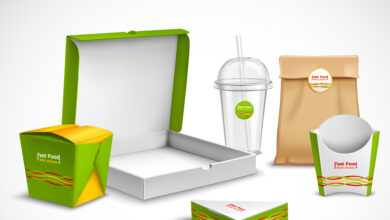What are the Advantages and Disadvantages of Bottled and Jarred Packaged Goods?

Bottled and Jarred Packaged Goods foods are hygienic. The packaging prevents moisture from entering the product. This keeps the product fresh and in good condition. While this can increase the cost of a product, bottled and jarred foods are generally cheaper. Here are the advantages and disadvantages of bottled and jarred packaged food. Let’s look at these benefits and disadvantages.
Table of Contents
Toxic Ingredients
Environment-friendly. Compared to jarred and bottled foods, glass packaging does not contribute to pollution. They can be recycled and reused. The process of packaging is not harmful to the environment. In addition, the products are not contaminated and have no toxic ingredients. This is a huge benefit for the environment. Lastly, bottled and jarred foods are convenient to store and use.
Lower Risk of Contamination
Price. Jarred packaged goods are cheaper than bottled ones. The raw materials for jarred products are the same. A jarged product is more convenient to open and has a lower risk of contamination. Also, jarred foods tend to be more expensive. Besides, jarred goods are much easier to store. This means they’re more environmentally friendly.
Product’s Shelf Life
Transparency. A bottle contains the product’s ingredients. This can help companies sell more products. A jar also extends the product’s shelf life. Moreover, a jar is more attractive to the eye, and a jar is a better choice for those who like to make healthier choices. However, bottled and jerked packaged foods have their disadvantages, but this shouldn’t discourage you from buying them.
Bottled and jarred packaged goods are more expensive than their glass counterparts. In addition to their increased cost, bottled and jarred products may not be the most environmentally friendly option. The jars, however, can be easier to carry around and store. In addition, jarred packages are less likely to be damaged or contaminated than jars.
Environmentally Friendly
Among the advantages of bottled and jarred packaged goods, jarred packages are environmentally friendly. However, the jars are more expensive to manufacture than glass and can damage the product. They may also contain harmful bacteria. For this reason, bottled and jacked packaged foods are preferred by many people. Unlike their glass counterparts, jars are more environmentally friendly.
Harmful Effects
Using bottled and jarred packaged goods is an environmentally friendly choice for many consumers. Compared to fresh foods, jarred food is less likely to have harmful effects. But the convenience of jarred and bottled goods is not without disadvantages. While bottled and jumbo containers are more convenient, they are more expensive than fresh produce. But they offer many advantages.
The first advantage of bottled and jarred packaged goods is that they are more convenient to buy and have longer shelf lives. Compared to fresh, unprocessed, and bottled food, jarred food products are more environmentally friendly, but they also add unexpected costs to consumers. Aside from being more convenient, jarred packaging is not as durable as bottled goods.
Packaging Materials
Another advantage of bottled and jarred packaged goods is their transparency. Unlike fresh, unpackaged food, jarred and bottled foods have a longer shelf life. Therefore, it is important to choose packaging materials carefully. While bottled and jarred packaged goods are environmentally friendly, they still need to be stored properly. When the food is packaged, it will last longer.
Conclusion:
The advantages of bottled and jarred packaged food are comparable. In terms of environmental benefits, jarred packaging is more sustainable than cans. Although both types of packaging are prone to contamination, bottles have longer shelf lives. Additionally, jars are recyclable, while cans are not. Despite the disadvantages of jarred and bottled packaged foods, they are better for the environment here.




